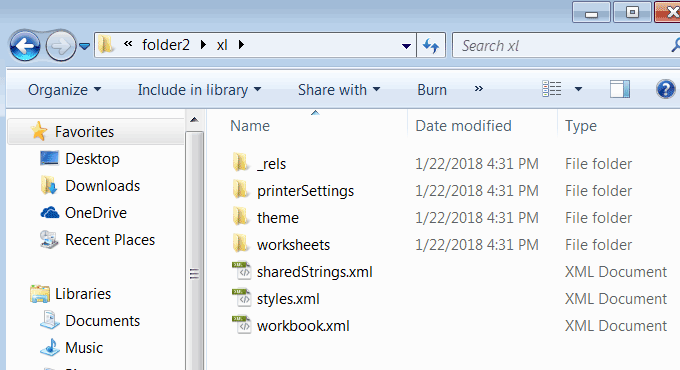5 Easy Ways to Unprotect Excel 2007 Sheets

How to Identify If Your Excel 2007 Sheet is Protected

Before we delve into the methods to unprotect your Excel 2007 sheet, it’s important to first determine if it’s actually protected. Here’s how you can check:
Review Tab: Go to the Review tab on the Ribbon. If you see a button labeled Unprotect Sheet or Unprotect Workbook, your sheet or workbook is protected.
Dropdown Menus: Check the dropdown menus for certain actions. If they are grayed out, it’s a sign that editing features might be restricted due to protection.
Cell Editing: Try editing cell content or formats. If you can’t change anything, it’s likely protected.
By identifying if your worksheet is protected, you’ll know which method from the list below would be most appropriate to unprotect it.
Using the Password to Unprotect Excel 2007 Sheets

The most straightforward way to unprotect an Excel 2007 sheet is by using the password set by the creator:
- Go to the Review Tab: Click on Unprotect Sheet or Unprotect Workbook.
- Enter the Password: A dialog box will appear asking for a password. If you have it, enter the password and click OK.
If the password is correct, the sheet will be unprotected, and you’ll regain control over all the features.
💡 Note: If you don't have the password, or it's been forgotten, you'll need to use one of the other methods to unlock the sheet.
Using Excel’s Built-In Unprotect Option

In some scenarios, Excel allows you to unprotect a worksheet without any password:
- Review Tab: Navigate to Review and click on Unprotect Sheet.
- Check for any message: If there’s no password set, you might see an information window stating that the workbook is not protected.
Sometimes, if the workbook has sheets protected with different passwords, Excel might display a message asking for specific sheet passwords.
💡 Note: This method only works if no password is set, which is rare but can occur if the sheet was protected without a password.
Using a Third-Party Software Tool

If you’ve lost or forgotten the password, using a third-party software tool can be your next best option. Here’s how to proceed:
Choose a Reliable Tool: Look for software tools designed to recover or remove Excel passwords. Ensure they have good reviews for effectiveness and security.
Download and Install: Follow the tool’s instructions to install it on your computer.
Run the Tool: Open the tool, select your Excel file, and follow the prompts to either crack the password or remove protection.
Unprotect Your Sheet: Once the tool completes its task, your sheet should be unprotected.
💡 Note: Be cautious with third-party software. Make sure you download from reputable sources to avoid malware or keyloggers.
Modifying the Excel File’s XML Structure

For those who have access to the file’s underlying XML code, here’s how to unprotect your Excel 2007 sheet:
Convert to .ZIP: Rename the .xlsx file to .zip and extract its contents.
Navigate to Workbook.xml: Open the xl folder, then workbook.xml.
Edit the XML: Look for lines with
sheetProtectiontags. Remove these lines or their content to disable protection.Recompile and Rename: Zip the modified files back into a single .zip file and rename it back to .xlsx.
Steps:

- Open WorkBook.xml
- Find:
<sheetProtection password="ABCDEFGH" sheet="1" objects="1" scenarios="1"/> - Replace with:
<sheetProtection password=""/>
After modification, you can reopen the file in Excel, and the sheets will be unprotected.
Copying and Pasting into a New Sheet

If all else fails, or if you simply want to start afresh, copying and pasting data into a new, unprotected sheet is straightforward:
Create a New Workbook: Open Excel 2007 and create a new workbook.
Select and Copy: In the protected sheet, select all the cells you wish to copy. You might need to unhide protected rows or columns.
Paste: Paste this data into the new, unprotected sheet.
This method keeps the data but might not transfer over all formatting, formulas, or conditional formatting.
💡 Note: This approach preserves the data but might not be ideal if you need to maintain complex formulas or formatting.
In wrapping up, Excel 2007 sheet protection can be bypassed with various methods, each catering to different needs:
- Use the password if available.
- Try Excel’s built-in unprotect options.
- Leverage third-party software when passwords are lost.
- Modify XML structures directly.
- Copy data to a new sheet when all else fails.
By understanding these methods, you’ll be well-equipped to work around worksheet protection issues, thereby enhancing your productivity and data handling capabilities.
Can I unprotect an Excel 2007 sheet without the password?

+
Yes, it is possible to unprotect an Excel 2007 sheet without the password using methods like built-in Excel options, third-party software, or by modifying the XML code, though these require specific circumstances or skills.
Is it legal to use software to crack Excel passwords?

+
Using third-party software to crack Excel passwords could be against terms of service or license agreements. Ensure you have permission to access the content before using such tools.
Will unprotecting a sheet remove the formatting?

+
Unprotecting a sheet generally does not remove existing formatting. However, copying data to a new sheet might not preserve complex formatting or formulas.
What if I forget the password for an Excel sheet?

+
If you’ve forgotten the password, you can use third-party tools or attempt to edit the XML structure to remove protection. Keep in mind that this might require technical skills.



